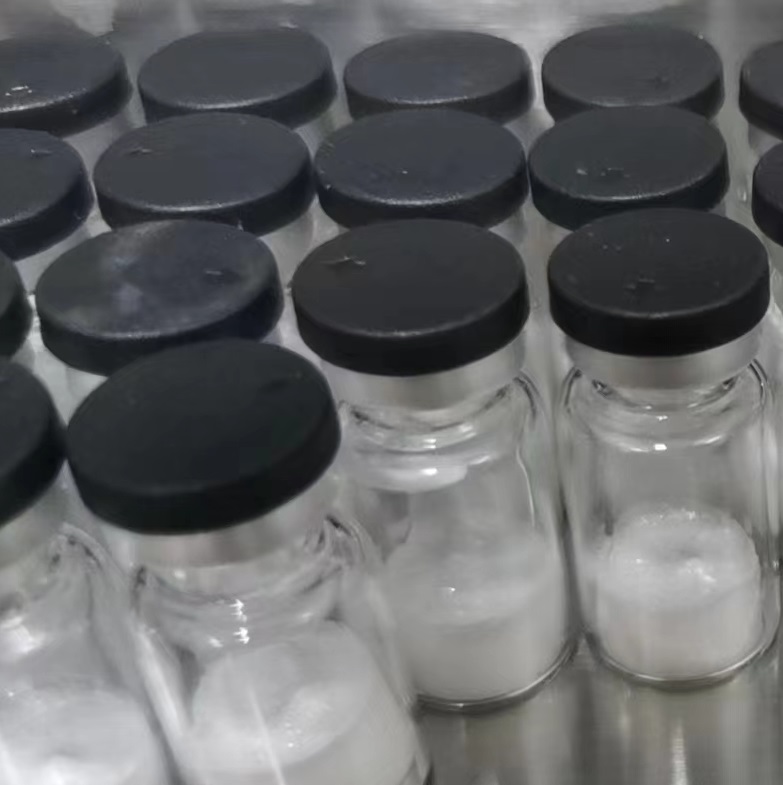-
Categories
-
Pharmaceutical Intermediates
-
Active Pharmaceutical Ingredients
-
Food Additives
- Industrial Coatings
- Agrochemicals
- Dyes and Pigments
- Surfactant
- Flavors and Fragrances
- Chemical Reagents
- Catalyst and Auxiliary
- Natural Products
- Inorganic Chemistry
-
Organic Chemistry
-
Biochemical Engineering
- Analytical Chemistry
- Cosmetic Ingredient
-
Pharmaceutical Intermediates
Promotion
ECHEMI Mall
Wholesale
Weekly Price
Exhibition
News
-
Trade Service
Purpose: Mammalian glucokinase (GK) is mainly expressed in the liver and pancreas, and plays an important role in carbohydrate metabolism
.
Single-gene GK disorders emphasize the role of GK in determining blood glucose set points
.
Mammalian glucokinase (GK) is mainly expressed in the liver and pancreas, and plays an important role in carbohydrate metabolism
Results: We reported a new functional gain gene GCCK variant p.
Val455Leu (V455L) in a German department with CHI and obesity (fasting blood glucose 2.
1 mmol/l, BMI 45.
0 kg/m2, HOM AI R1) Among them, inheritance is an autosomal dominant trait
.
A male family member developed type 2 diabetes before the age of 35 (fasting blood glucose 2.
8~3.
Figure 1 NovelGCK missense mutation p.
Val455Leu in a hyperinsulinemic family
.
(A) The pedigree of the affected family: black symbols indicate individuals who have been diagnosed with infantile hyperinsulinemia and hypoglycemia
.
Figure 1 NovelGCK missense mutation p.
Figure 2 The response of recombinant Dendra2-GK wild-type (V455), -M455, -E455 and -L455 enzymes to endogenous and synthetic activators and competitive inhibitor mannose
.
Respectively in 2(A), 5(B), 10(C), 25μ/l glucose (D), 3μg recombinant FBPase-2, 10μ/l RO-28-1675, 2(A), 5(B), Under the conditions of 10(C) or 25μ/l glucose(D), the glucose phosphorylation activity of recombinant Dendra2-GK mutant (1 mmol g or 2 mmol g when inhibited by mannose seven sugar) was measured respectively, and the combined use 2( A) Glucose phosphorylation activity at 5(B), 10(C) or 25 mmol/l glucose (D)
.
Figure 2 The response of recombinant Dendra2-GK wild-type (V455), -M455, -E455 and -L455 enzymes to endogenous and synthetic activators and competitive inhibitor mannose
Figure 3 Intracellular localization and insulin secretion of Dendra2-GK variants
.
(A) Representative images of insulin-secreting MIN6 cells transiently transfected with Dendra2-GK wild-type (V455) and mutants GKM455, -E455, and -L455 show that Dendra2 fluorescence is uniformly distributed in the cytoplasm
.
Figure 3 Intracellular localization and insulin secretion of Dendra2-GK variants
Figure 4 Predicted the effect of replacing Val-455 by Met, Glu or Leu in the structural model of the super-open, enzyme-inactivated GK conformation
.
(A) In the ultra-open GK conformation (PDB ID 1v4t[29]), the large domain of the enzyme is shown in dark gray, the small domain is shown in light gray, the interconnection region I-III is shown in light green, and C- The terminal helix α13 is shown in violet, and the helix α5 is shown in dark blue
.
Figure 4 Predicted the effect of replacing Val-455 by Met, Glu or Leu in the structural model of the super-open, enzyme-inactivated GK conformation
.
(A) In the ultra-open GK conformation (PDB ID 1v4t[29]), the large domain of the enzyme is shown in dark gray, the small domain is shown in light gray, the interconnection region I-III is shown in light green, and C- The terminal helix α13 is shown in violet, and the helix α5 is shown in dark blue
.
The residues on both sides of the highly flexible structure (His-156, ASN-180) are dyed light blue to distinguish it from the end of the enzyme
.
The residue Val-455 is shown as a rod-shaped model and highlighted in red
.
The viewing direction of the details in (be) is indicated by the red arrow
.
(B) The enlarged part of the allosteric site includes the polar contact of residue 455 (dashed line) and the minor (green disk) or major (red disk) spatial overlap with adjacent amino acids
.
The adjacent amino acids in contact with Val-455 are orange
.
Those contact residues that interact beyond the hydrogen bonds of the alpha-helical backbone are called (also known as Inc-e)
.
In the amino acid represented by the rod-shaped model, oxygen atoms are dyed red, and nitrogen atoms are dyed blue
.
(C) Val-455 is mutated to methionine, the mutated residue is shown in green, and the sulfur atom is shown in yellow
.
For illustrative purposes, two possible rotating bodies are proposed
.
Polarity and spatial contact are the same as before, and amino acids interact with mutated (but not wild-type) residues, which are yellow
.
(D) Val-455 is mutated to glutamic acid (the color scheme is the same as before)
.
(E) Val-455 is mutated to leucine (color scheme is the same as before)
Conclusion: We have provided new knowledge about the structure-function relationship of GK, with special emphasis on enzyme activation, potentially providing new ideas for breaking the vicious circle of CHI and type 2 diabetes patients' blood glucose level fluctuations and the subsequent long-term metabolic changes.
Strategic insights
.
Insights
.
Original source:
Langer S, Waterstradt R, Hillebrand G, Santer R, Baltrusch S, The novel GCK variant p.
Val455Leu associated with hyperinsulinism is susceptible to allosteric activation and is conducive to weight gain and the development of diabetes .
Diabetologia 2021 Sep 16
Val455Leu associated with hyperinsulinism is susceptible to allosteric activation and is conducive to weight gain and the development of diabetes in this message







